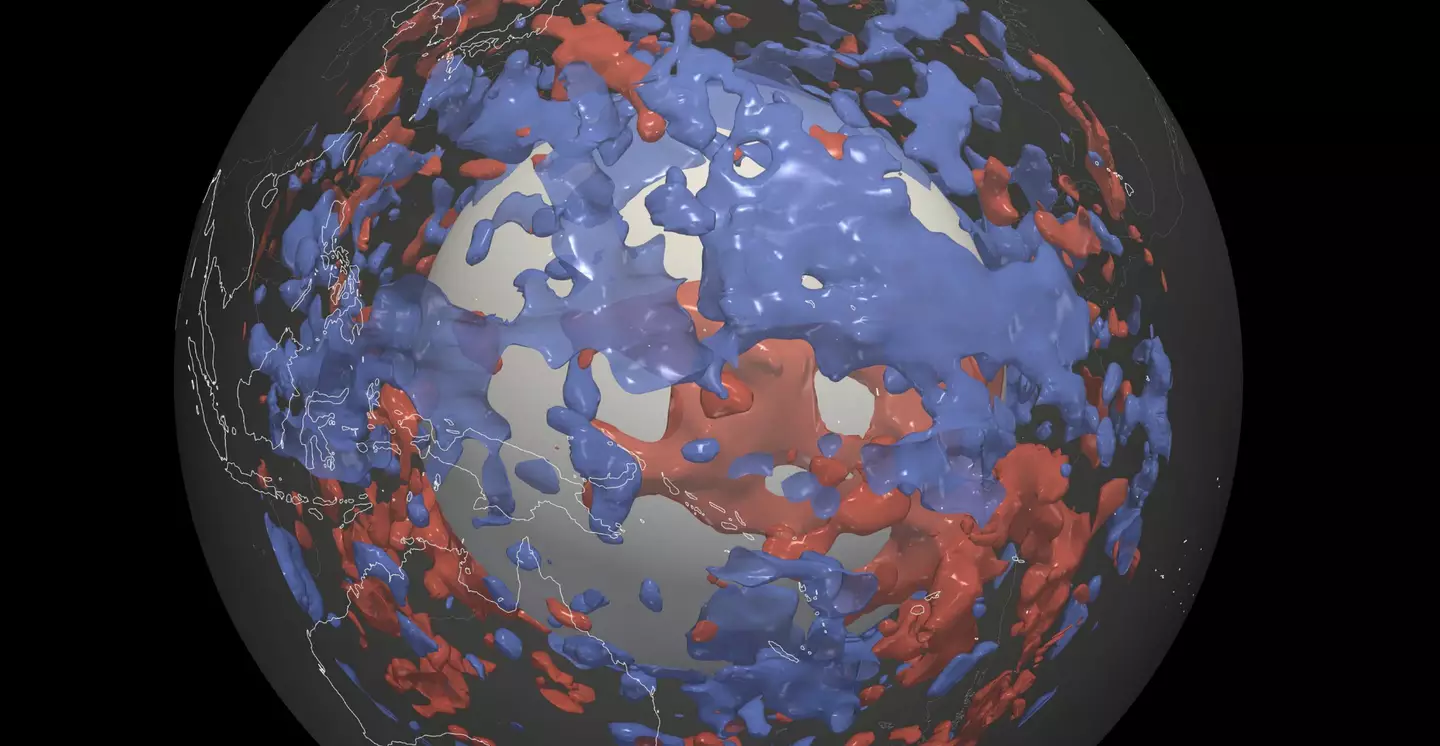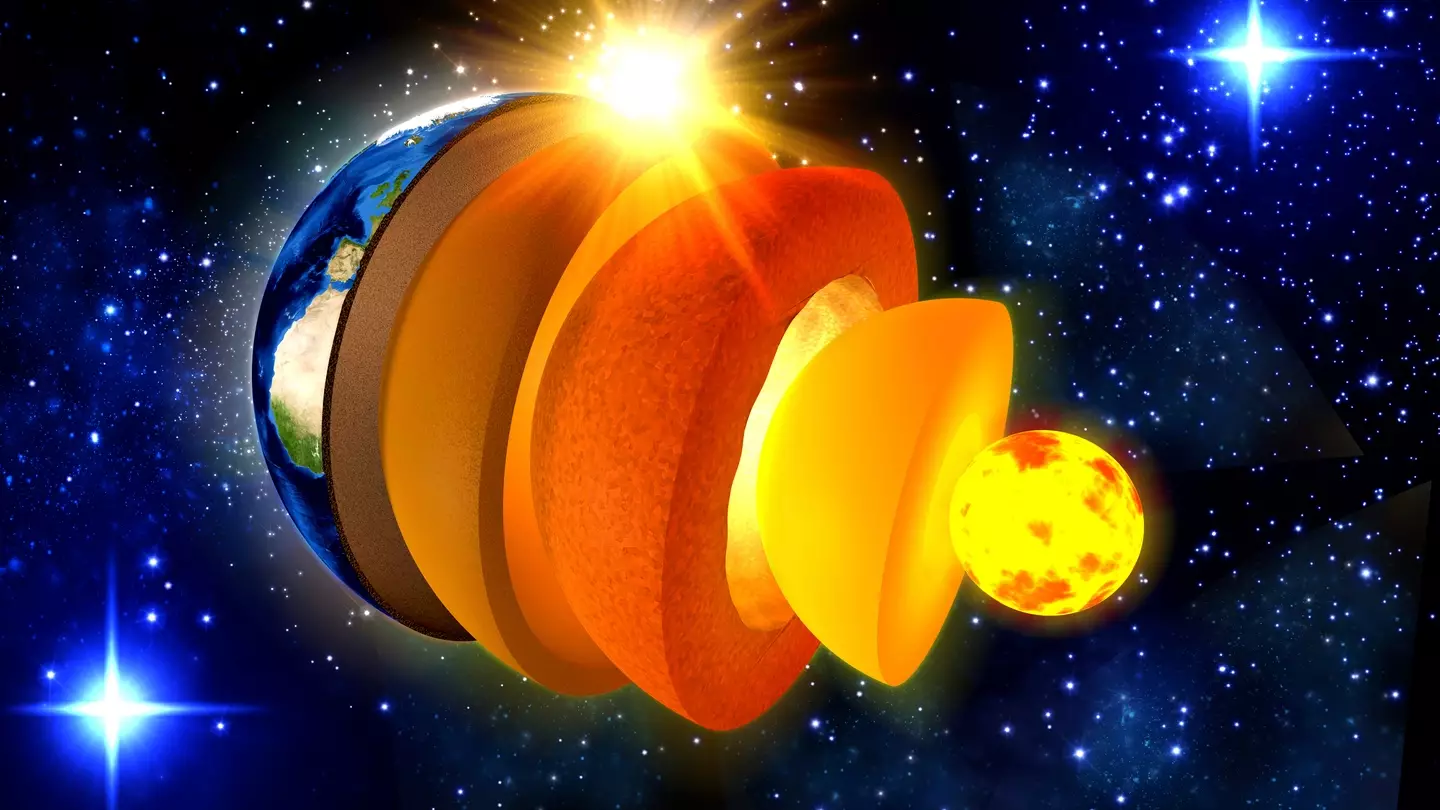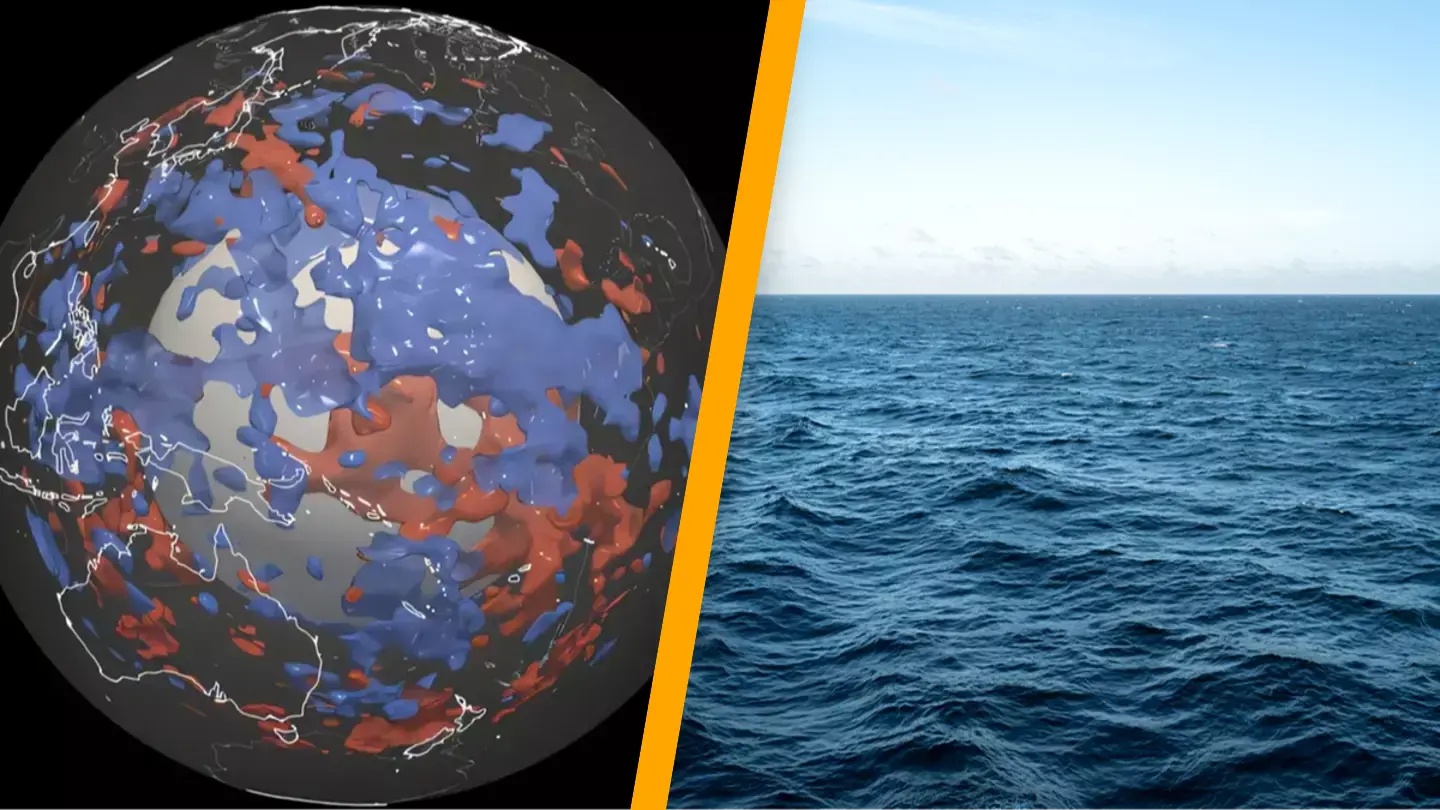New findings beneath the Pacific Ocean have left scientists puzzled.
There remains much to uncover about our planet and its subterranean layers, a fact underscored by researchers at ETH Zurich, a university in Switzerland.
Geophysicists from ETH Zurich have been focusing their studies on the Earth’s lower mantle.
Their goal was to ‘locate sunken plate material within the Earth’s interior’ using a high-resolution model, according to a press release, but they inadvertently discovered something unforeseen.
Though scientists believed they held a robust understanding of the Earth’s tectonic plates, it has now been found that earthquake waves behave in ways not previously understood.
They anticipated finding submerged tectonic plates in the Earth’s mantle within subduction zones (areas where two plates meet, with one descending beneath the other into the Earth’s interior).
However, the latest research, featured in the journal Scientific Reports, has identified such plates in unexpected locations.
One such location is beneath the Pacific Ocean. Some now propose that a ‘lost world’ might exist beneath the globe’s largest and deepest ocean.

Commenting on this significant discovery, Thomas Schouten, the lead author and a doctoral student at ETH Zurich’s Geological Institute, stated, “Apparently, such zones in the Earth’s mantle are much more widespread than previously thought.”
Existing plate tectonic theories claimed that there should be no subducted plates below the Pacific, as it was deemed ‘impossible that there were subduction zones nearby in the recent geological history’.
Exploring the ‘dilemma’ faced, Schouten continued, “With the new high-resolution model, we can see such anomalies everywhere in the Earth’s mantle. But we don’t know exactly what they are or what material is creating the patterns we have uncovered.”

As humans are unable to physically explore the area in question for additional data, experts can only hypothesize about the nature of the discovered material and its presence.
“We think that the anomalies in the lower mantle have a variety of origins,” Schouten remarked regarding their developing theories.
“It could be either ancient, silica-rich material that has been there since the formation of the mantle about 4 billion years ago and has survived despite the convective movements in the mantle, or zones where iron-rich rocks accumulate as a consequence of these mantle movements over billions of years.”
To gain further insights into the mysterious substance, additional research with more advanced models will be necessary.

